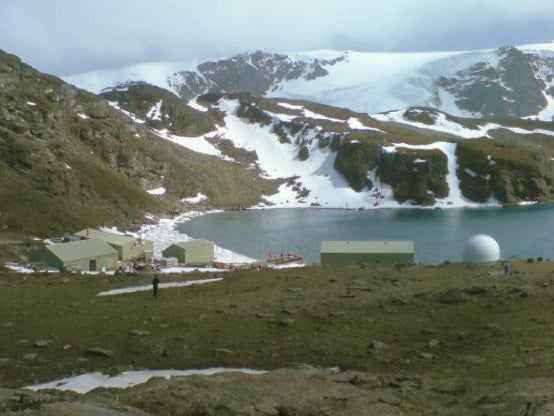Antarctic ecosystems under threat from invasive flightless midge, scientists warn
Non-biting ‘decomposer’ species impacting soil composition and releasing large amounts of nitrogen in vulnerable region

An invasion of flightless, biteless midges have arrived uninvited in Antarctica where their rapid proliferation represents a major threat to the fragile ecosystem, scientists have warned.
Eretmoptera murphyi are endemic on Signy Island which sits between South Georgia - a British overseas territory just over 1,000 miles east of southern Argentina - and the Antarctic mainland.
It is thought to have been inadvertently brought there during a 1960s plant transplant experiment from South Georgia. With no natural predators or competitors it has been allowed to establish a stronghold.
Rapid regional warming and increased levels of human activity in the Antarctic are believed to have been key drivers of the insect’s success.
A research team from the University of Birmingham, along with the British Antarctic Survey, is studying how the midge is able to survive in extreme polar conditions and the impacts it could have on the region.
The insect – a “decomposer” species – feeds on dead organic matter, releasing large volumes of nitrogen as well as nutrients into the soil, which has had an effect on peat decomposition and soil structure.
“It is basically doing the job of an earthworm, but in an ecosystem that has never had earthworms”, said Jesamine Bartlett, a PhD candidate at the University of Birmingham, who will be presenting the research team’s findings at the British Ecological Society’s annual meeting. “Antarctic ecosystems are characterised by having a very low nutrient level. Partly because it’s not very biodiverse, there’s not a lot of turnover there.
“But this midge is the biggest organism on the island and there aren’t any other insects in this ecosystem at all. It’s really basic. Any input of nutrients in an ecosystem that is already adapted to very low nutrient levels and very extreme conditions will have an impact. What those might be and whether they’re going to be good or bad, we don’t quite know yet.”
The findings suggest that this single species can lead to the release of as much nitrogen as is introduced in areas frequented by seals.
“This is an alarming starting point,” Ms Bartlett said. “The form of nitrogen it’s introducing is rich in nitrates which plants prefer – it’s ideal plant fertiliser, but it’s not what mosses adapted to a low-nutrient environment need. Moss in Antarctica is the equivalent of our forests.”
To assess the ecological impacts of E murphyi, the team collected information on its abundance and those of other invertebrates and microbes as well as environmental variables such as water content, organic carbon, soil nitrogen content and substrate composition. These were then compared to locations on the island where the midge did not occur.
More soil and shallower moss banks were present at sites where the midge was most abundant, suggesting that the midge is eating its way through the peat in the moss banks and turning it into soil.
Ms Bartlett said: “This is concerning as Signy Island hosts some of the best examples of moss banks in the Antarctic region. It is also home to Antarctica’s only two flowering plant species, the hair grass and pearlwort.”
She added: “Recent studies looked at how existing Antarctic plants might respond to an increase in nitrogen and found they would probably out-compete all of the moss. So then you start looking at a complete change in how the ecosystem functions.”

Antarctica is believed to be at growing risk from invasive species due to global warming.
“Visitors to Antarctica are subject to increasingly strict biosecurity measures but accidental introductions continue to occur”, said Professor Peter Convey of the British Antarctic Survey. “Midge larvae, for instance, are tiny and cannot be seen easily with the naked eye. Tourists and researchers may be bringing them in from their stopovers in the sub-Antarctic and moving them around the continent in the mud on their boots.”
The growing impacts of warming temperatures have seen numerous warnings from climate scientists in recent months, as levels of sea ice have fallen and colossal glaciers holding immense quantities of water, previously believed to be stable, are showing new signs of rapid melting.
Join our commenting forum
Join thought-provoking conversations, follow other Independent readers and see their replies
Comments
Bookmark popover
Removed from bookmarks